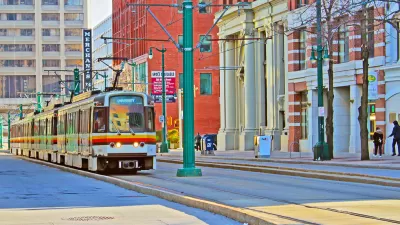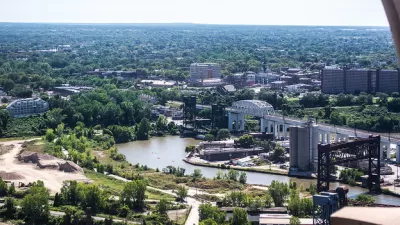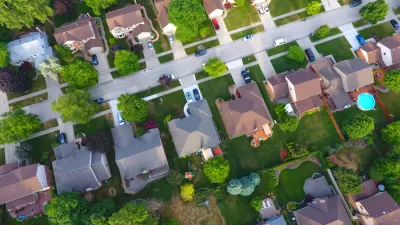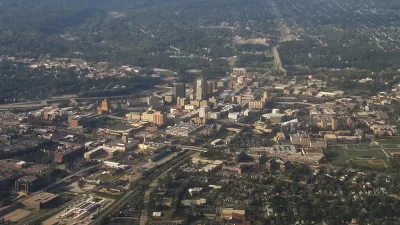Author Catherine Tumbler writes on how this Rust Belt city on Lake Erie is attempting to capitalize on its past, reverse its mistakes, and build a greener economy.

"Between 1950, when the population stood at 580,000, and 2000, Buffalo lost about half its residents, hollowing out entire neighborhoods and large parts of downtown. (Locals rejoiced when the estimated 2012 census showed that the exodus had slowed to a trickle.) Deindustrialization and outsourcing account for much of the disaster. But so does metro Buffalo’s ever-widening loop of suburban sprawl, set in motion by mid-twentieth-century subsidized housing and commercial property policies that amounted to de facto affirmative action for second-generation white immigrants. By 2000, Buffalo’s metro footprint had expanded to three times its 1950 size, but the population remained relatively constant. This meant (among other things) that the same number of people supported three times the infrastructure—including schools, roads, sewer and water lines, and police and fire protection—in a fiscally reckless, politically divisive, agriculturally improvident pattern known as 'sprawl without growth.'"
FULL STORY: Buffalo Exchange: Retrofitting a Rust Belt capital

Planetizen Federal Action Tracker
A weekly monitor of how Trump’s orders and actions are impacting planners and planning in America.

Chicago’s Ghost Rails
Just beneath the surface of the modern city lie the remnants of its expansive early 20th-century streetcar system.

San Antonio and Austin are Fusing Into one Massive Megaregion
The region spanning the two central Texas cities is growing fast, posing challenges for local infrastructure and water supplies.

Since Zion's Shuttles Went Electric “The Smog is Gone”
Visitors to Zion National Park can enjoy the canyon via the nation’s first fully electric park shuttle system.

Trump Distributing DOT Safety Funds at 1/10 Rate of Biden
Funds for Safe Streets and other transportation safety and equity programs are being held up by administrative reviews and conflicts with the Trump administration’s priorities.

German Cities Subsidize Taxis for Women Amid Wave of Violence
Free or low-cost taxi rides can help women navigate cities more safely, but critics say the programs don't address the root causes of violence against women.
Urban Design for Planners 1: Software Tools
This six-course series explores essential urban design concepts using open source software and equips planners with the tools they need to participate fully in the urban design process.
Planning for Universal Design
Learn the tools for implementing Universal Design in planning regulations.
planning NEXT
Appalachian Highlands Housing Partners
Mpact (founded as Rail~Volution)
City of Camden Redevelopment Agency
City of Astoria
City of Portland
City of Laramie





























